String of Turtles Plant Care
INSIDE : Learn everything you need to know for beautiful healthy String of Turtles Plant Care! Tips like their watering needs, ideal light requirements and how they get their turtle name. Start growing healthy Peperomia prostrata today.
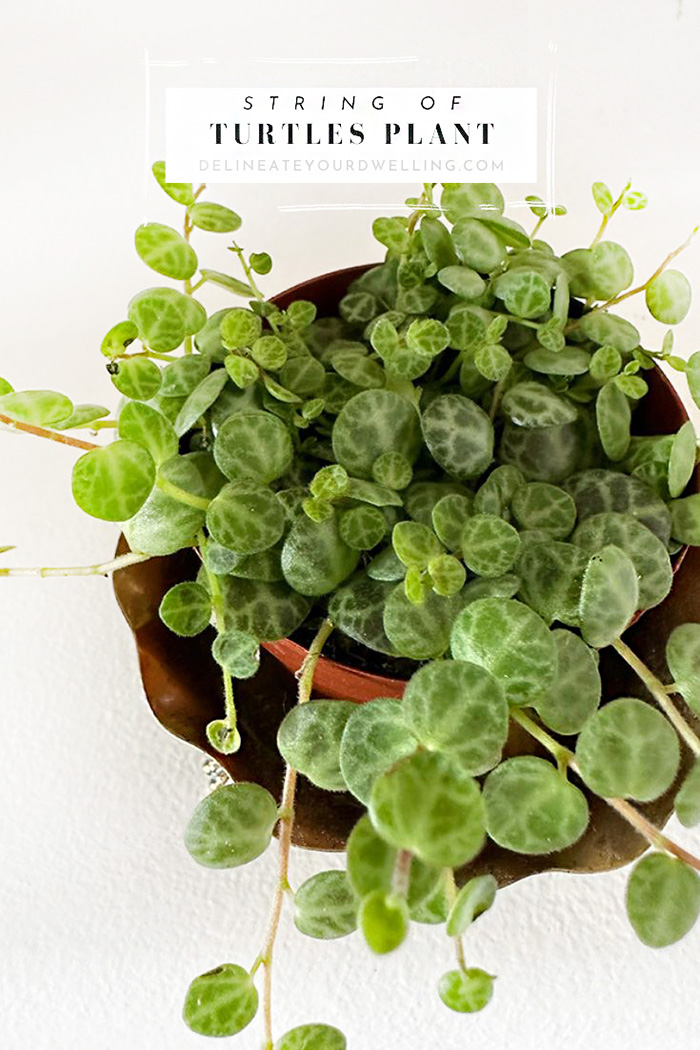
This post may contain affiliate links. See full disclosure here.
I have long been a fan of String of Pearls. I love their plump trailing pearls and the ease at which they grow. So, when I started hearing about a new but somewhat similar plant… String of Turtles I was very intrigued! (And now there is a Variegated String of Pearls variety!)
Although they have a similar name, their look and needs are different.
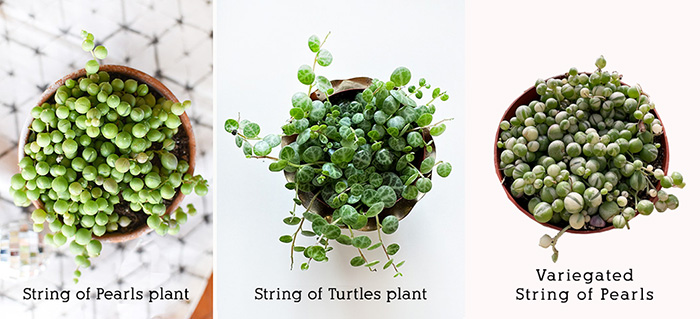
Peperomia prostrata
Peperomia prostrata, is a succulent from Brazil. Often called turtle strings, the plant’s small, circular leaves give a unique feel to any space it lives in. It’s dainty looking leaves makes this plant a favorite for container gardens.
Unlike most succulents, String of Turtles has a slow growth rate. Because of this, it is a great apartment or small home plant.
String of Turtles care
String of Turtle care is easier than you may think. Let’s get into some of the basic care tips below.
What are the best growing conditions for Turtle Strings?
String of Turtles are a fairly easy plant to care for, but being tropical succulent there are some important take aways that should be noted.
What supplies do I need to grow String of Turtles?
Plant Moisture Meter | Pruning Shears | String of Turtles plant | Pot | Spray Bottle
How often should I water my String of Turtles?
While String of Turtles prefer slightly moist conditions, they tend to suffer from overwatering more than they do dry conditions. Since they hold moisture in their thick leaves, make sure to check that the soil has dried out before watering again.
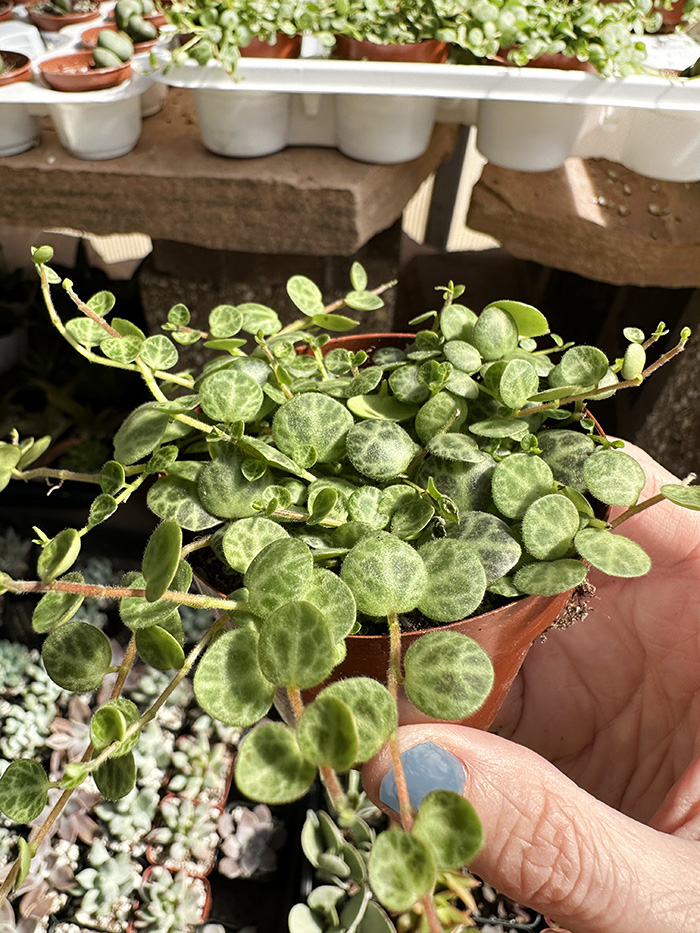
Make sure the pot has drainage holes, water well, then let the soil dry out between waterings.
Bottom-watering is always another way to ensure you don’t over water your plant.
Do String of Turtles like full sun?
String of Turtles do best with bright indirect sunlight. You can learn more about the best sunlight levels for houseplants here.
Ideally String of Turtles like about 2-3 hours of bright sunlight but try to avoid direct sun exposure. Too much direct sunlight can result in their delicate leaves getting sunburn.
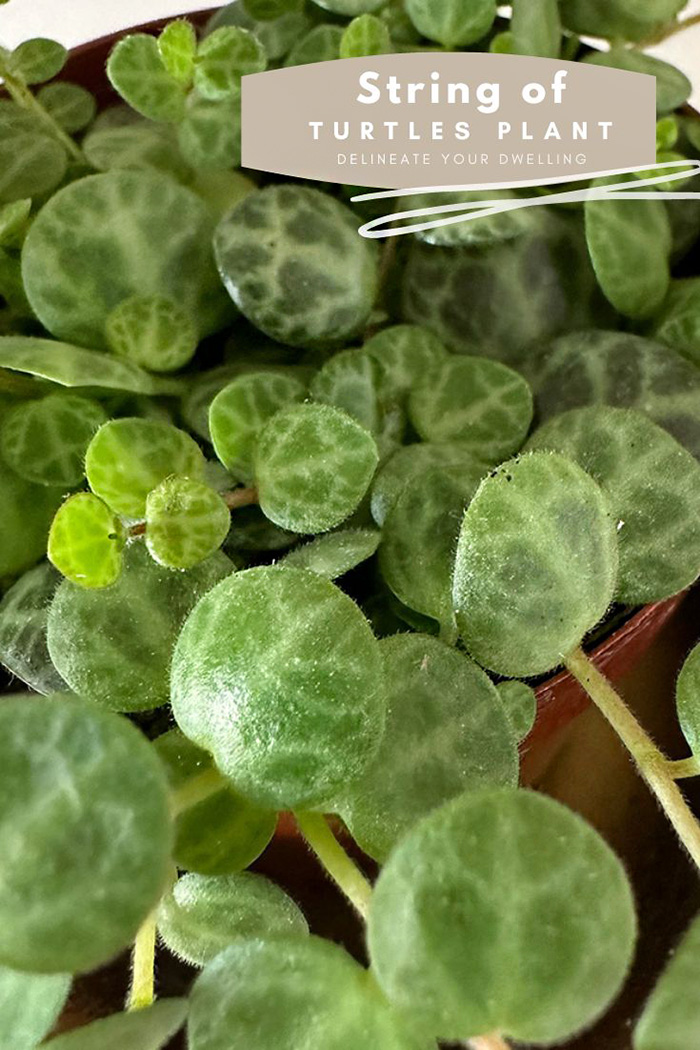
If your plant starts to become stringy however with long distances between their leaves, this is an indication of not enough sunlight.
Soil Preferences
Most succulents like premixed soils that has been formulated especially for succulents and cacti, these premixes should not be used for string of turtles plants.
Instead, a mix consisting mainly of organic matter should be used. Soil that is rich in organic matter, has good drainage, and is light and loose is best for String of Turtles.
Avoid potting soils that have moisture retaining crystals, as they can keep the soil wet for too long which can cause root damage.
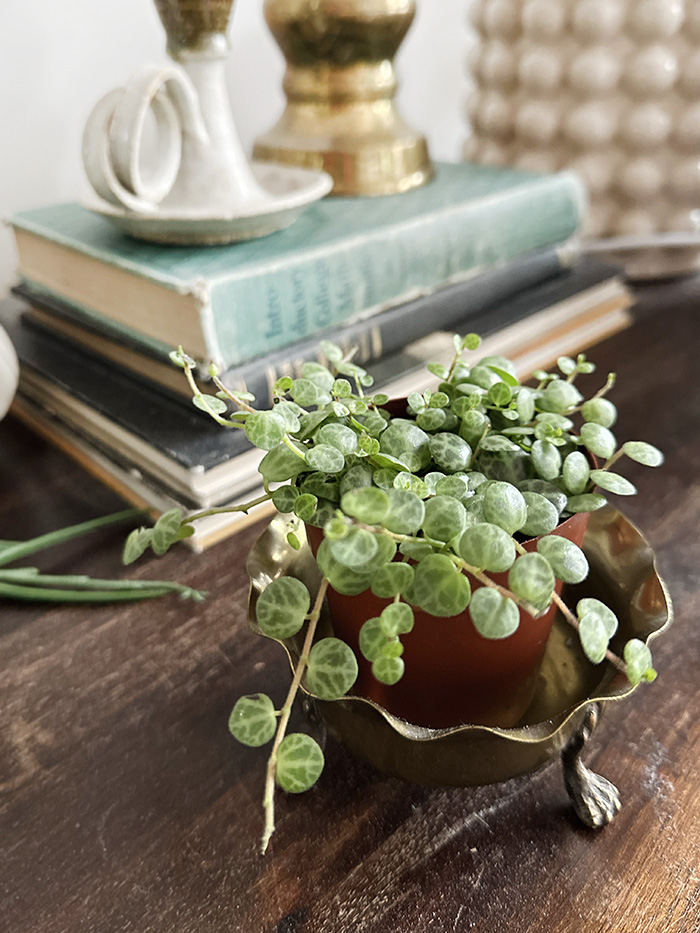
If you like this post about succulent care, then you will definitely enjoy my indoor houseplant care ebook, Happy Houseplants!
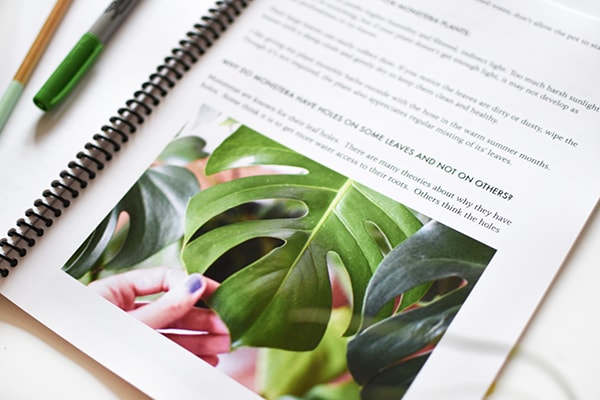
My Happy Houseplants ebook talks about how to not kill all the plants and includes: – A super helpful checklist for 6 steps to keep your plants alive + thriving. – A deep dive on 7 trending “it” plants (like your finicky Fiddle Leaf Fig!) -5 plant printables to hang in your home. Buy Happy Houseplants here!
How did String of Turtles get it’s name?
If you look closely at your plant’s leaves… they look like the shell of a turtle all strung together.
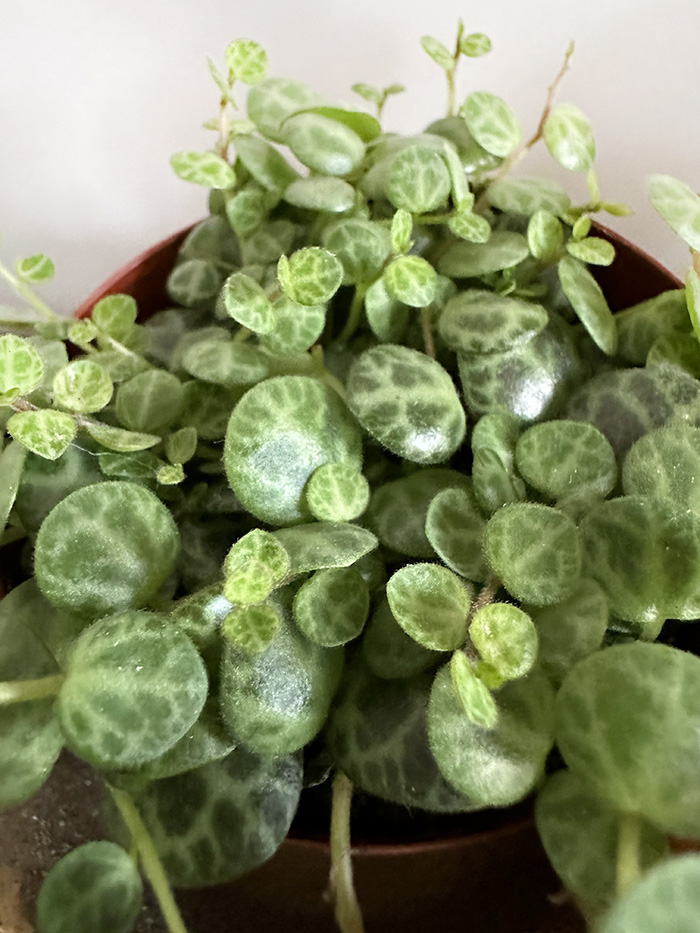
Each leaf has intricate patterns covering it’s surface. The leaves of a Peperomia prostrata are a wonderful addition to any indoor houseplant collection.
Love plants like I do? You might like some of my other Plant Care + Tip posts.
How big do String of Turtles get?
String of Turtles are slow growers with their mature size being about 4″ in height and a trailing vine around 1′ – 2′ feet’ long. The stems will grow out in all directions around the pot, creating a thick mat of leaves covering the sides.
Are String of Turtles toxic to cats?
String of Turtles is not toxic to household pets, including cats, dogs, and rabbits. It’s generally considered safe to have around feline friends. This is good news for cat lovers who also enjoy having houseplants in their home.
However, you should always try to keep your animals from eating plants and still important to be aware that even non-toxic plants can cause some minor stomach upset if ingested in large quantities.
Also, cats can be attracted to chew on the leaves because of their trailing nature and interesting texture. So, if you find that your cat is constantly munching on your String of Turtles, it might be best to place the plant out of reach.
Here are some tips for keeping your cat and your String of Turtles safe:
- Provide your cat with plenty of alternative things to chew on, such as catnip toys or scratching posts.
- Place your String of Turtles in a hanging basket or on a high shelf where your cat can’t reach it.
- If you think your cat has eaten a significant amount of the plant, contact your veterinarian immediately.
How to propagate String of Turtles
Propagating String of Turtles is a simple process. You can propagate in either water or soil. I always prefer to propagate in water, to make sure those roots are growing, but either method will work.
Learn more about basic Water Propagation here.
- Use a pair of small pruners to cut off a few cuttings just below a node (where leaves and roots grow out of the main stem).
- Remove the lower portion of leaves and stick the end of the cutting in a jar of water.
- Set the jar in an area with indirect light.
- Replace the water once a week or so when it gets a bit grimy.
- Once the roots are two to three inches long, which might take a few weeks to a few months, you can transfer the cuttings into a pot with potting mix and care for the plant how you normally would.
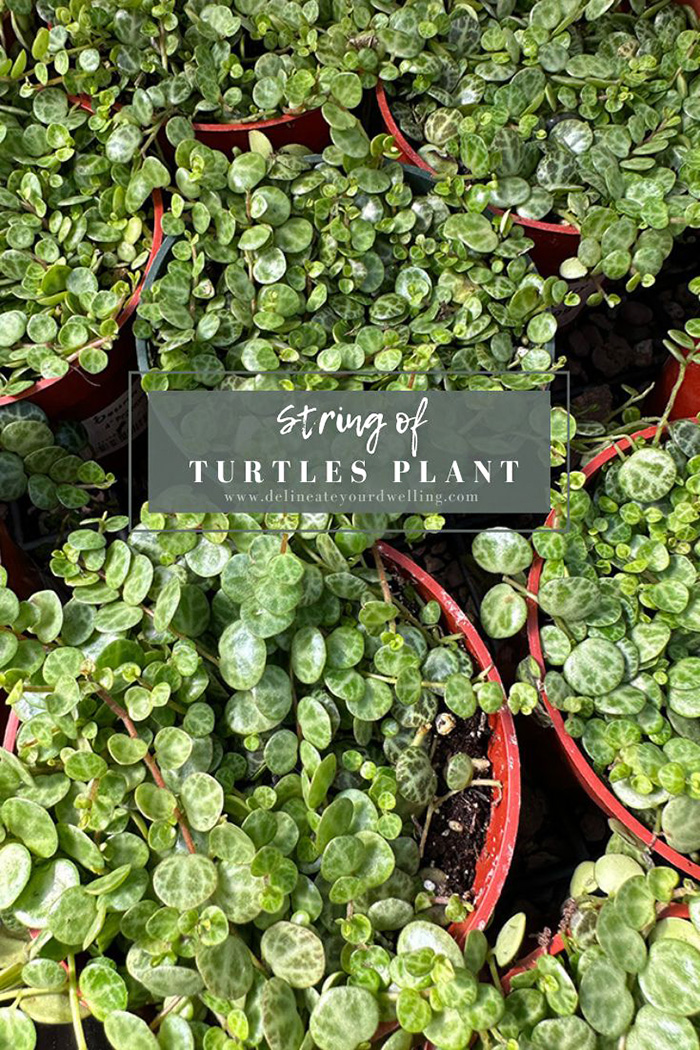
Will my String of Turtles bloom?
Once your plant has settled in your home, you can expect it to bloom about once or twice a year. Their blooms are small, a bit spiky, and white. They appear on the plant between the leaves.
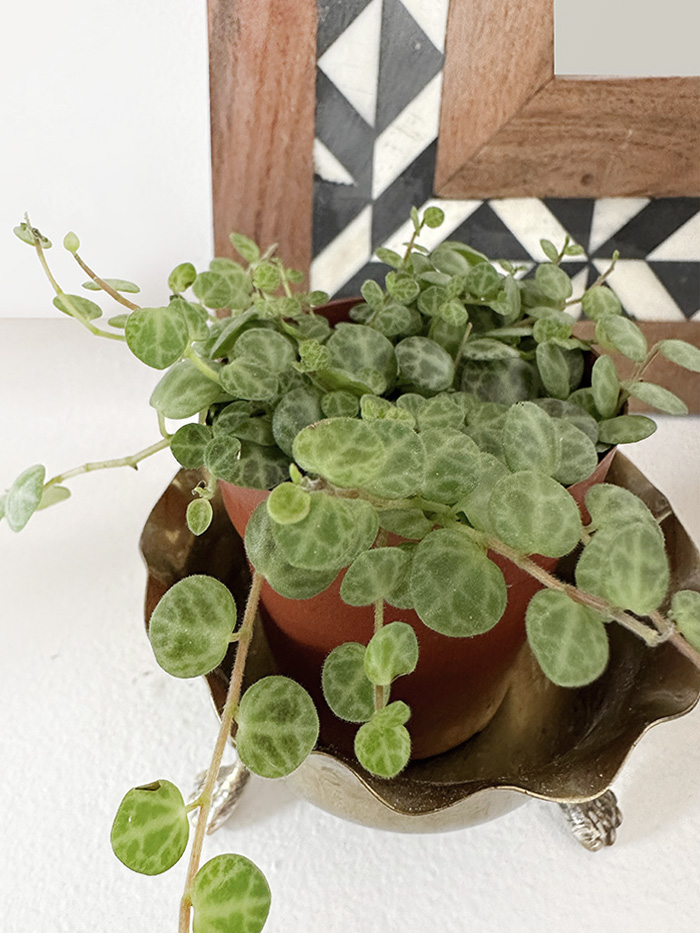
Looking for some other plants? Check these out…
